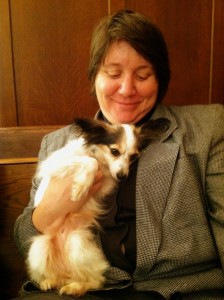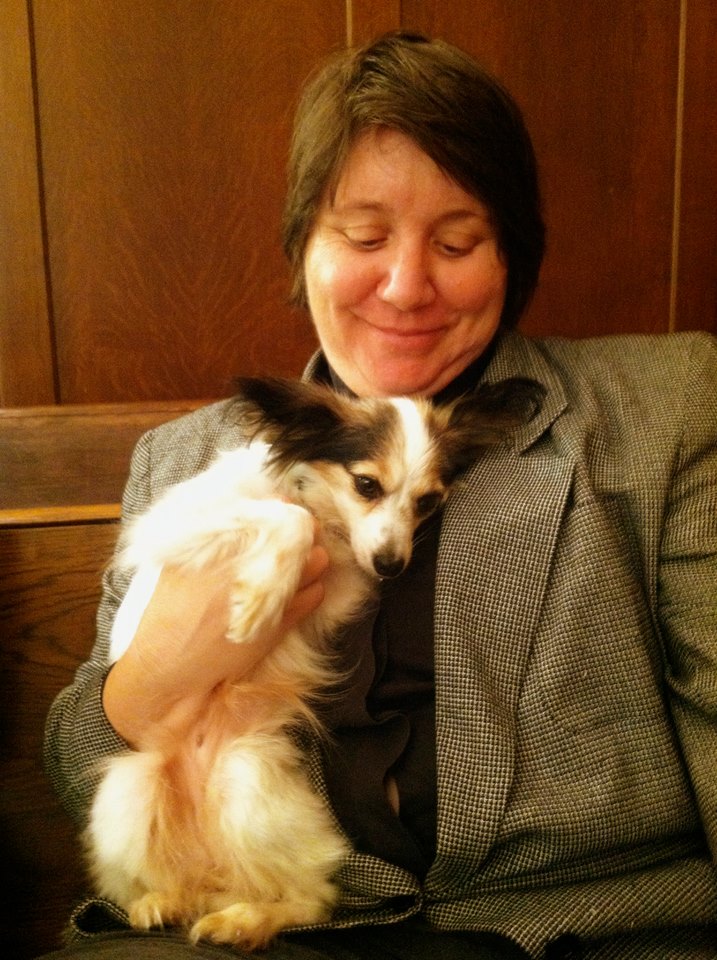God Is in the Neighborhood – Donna Simon
 There’s a neighborhood in Kansas City called Columbus Park. As the name suggests, it was settled by Italian immigrants, around the turn of the twentieth century. Today, the red, white and green striped fire hydrants and a couple of seldom-used bocce ball courts hearken back to a heyday in which all of the doors were unlocked and kids ate spaghetti in a different house each night. The neighborhood is still close-knit. I lived there for a couple of years and loved the neighborly ethos and sense of connection. Oh, and the ridiculously good food at the yearly block party.
There’s a neighborhood in Kansas City called Columbus Park. As the name suggests, it was settled by Italian immigrants, around the turn of the twentieth century. Today, the red, white and green striped fire hydrants and a couple of seldom-used bocce ball courts hearken back to a heyday in which all of the doors were unlocked and kids ate spaghetti in a different house each night. The neighborhood is still close-knit. I lived there for a couple of years and loved the neighborly ethos and sense of connection. Oh, and the ridiculously good food at the yearly block party.
Columbus Park sits due east of KC’s famous River Market, adjacent to the confluence of several busy freeways. Coming into town from north or west, one cannot help but notice its most prominent feature: a brick and stone edifice which towers over the one and two-story homes and storefronts which dot the rest of the neighborhood. Holy Rosary Catholic Church is a veritable lighthouse in a sea of bungalows and flats.
Holy Rosary was built in 1890, by Sicilian Immigrants. It is located in the dead center of the neighborhood, and you have to know that the placement was intentional. Holy Rosary was built as the spiritual center of a tightknit community of immigrants, a mission post for Scalabrini missionaries from 1891 to this day. Milestones were celebrated at church, neighborhood events and potlucks were hosted in the church or at the fellowship hall across the street. The community of Columbus Park quite literally revolved around Holy Rosary Catholic Church.
This story is not unique to Columbus Park, though, is it? Neighborhoods and communities across this country have been anchored by a church, or a few churches. Through the post-war fifties, churches and neighbors performed a symbiotic dance of love and fidelity that was as beautiful as it was tenuous.
In most of our communities, those days are over. There are vestiges, notably in immigrant communities and in the African American community, where the church continues to play a central role in many lives. But nearly everyone writing about the spiritual landscape of contemporary America tells a similar tale: the ground shifted beneath our churches, and if we noticed, we were largely dumbfounded. We built monoliths in the middle of the last century that were supposed to draw the masses into the middle of this one. We developed programs, and when those programs failed to deliver, we went to conferences. We learned techniques for church growth, guaranteed to do for us what they had done for Willow Creek and Saddleback.
As the neighborhood has become less and less interested in what we’re doing inside our walls, the contemporary church has demonstrated an unfortunate inclination to retreat behind those walls. What I admire most about the missional church conversation is its dogged insistence that the mission Dei is happening all around us, and our task is not to pick up practices that work in suburban Chicago, or southern California, or down the street, but to embrace our own contexts and engage with our own neighbors.
Missional thinkers like George Hunsberger, David Bosch, and Craig Van Gelder have encouraged church leaders to cultivate a healthy curiosity about what God is doing in our contexts. Others have offered more practical advice about developing relationships I in the community. Alan Roxburgh’s recent book, Missional: Joining God in the Neighborhood (Grand Rapids, MI: Baker Books, 2011), outlines both a theological foundation and useful strategies which churches may employ.
Roxburgh follows a well-trod path in missional church theology which suggests that our primary biblical touchstone for contemporary missional engagement and evangelism is no longer the Great Commission. Twenty-first century apostles are invited into a missional engagement that looks more like the sending of the seventy in Luke 10:1-12. Roxburgh unpacks those verses and offers ten rules for leaders to follow in order to “enter the way” of Luke 10. My favorite of those rules is “eat what is set before you,” which invites us to leave behind our own preconceptions and enter into the world of our neighbor, to meet the other exactly where she is.
At St. Mark Hope and Peace Lutheran Church, where I serve as pastor, we are forming Neighborhood Teams—small groups of parishioners charged with engaging with our parish on its own terms. Our parish is made up of the five neighborhoods which surround our church. Each neighborhood has its own team, made up of two or more persons who have committed to attending the neighborhood association meetings, doing regular prayer walks, mapping the neighborhood for the rest of the congregation, and meeting the folks who live in that neighborhood.
We’ve just begun this initiative, so I cannot report that it has changed our ministry…yet. I can report that my parishioners are excited to find more concrete ways to connect with our neighbors. We know that the Holy Spirit is present and working all around us. This is one more way to join in with what the Spirit is doing, to let our neighbors witness to us.
The church may not always be the center of the neighborhood, as Holy Rosary once was both physically and spiritually in Columbus Park. But we can still proclaim God’s grace and healing to our hurting neighbors, from alongside them in our neighborhoods. There is much power in a gospel proclaimed from the margins, and in a church which can listen as well as it speaks. And all of our churches can get there.
Holy Rosary Catholic Church is still a beacon of hope for recent immigrants in Columbus Park. Today, however, those immigrants are more often from Vietnam and other Southeast Asian countries. The church reached out to those neighbors, visiting them and eating what was offered. Now there are two main festivals held each year at Holy Rosary: St. Joseph’s Table—which moved from parish homes to the parish hall in 1950—and The Feast of Our Lady of La Vang—a Vietnamese Catholic festival which is a much newer addition. God continues to move in that place, as God is moving in each of our contexts. Figuring out how to join with God is the most important task before us in this new day.
Pastor Donna Simon is a Midwesterner by birth (and temperament), though she has spent much of her life on the West Coast. She is a graduate of San Francisco State University (English Literature) and Pacific Lutheran Theological Seminary in Berkeley, California. She is in the third year of the Doctor of Ministry program in Congregational Mission and Leadership at Luther Seminary, St. Paul, Minnesota. Donna is pastor at St. Mark Hope and Peace Lutheran Church, an inner city parish in Kansas City, Missouri. St. Mark Hope and Peace has engaged in a process of intentional renewal, seeking to engage with what God is doing in the midtown area of Kansas City and beyond. The congregation worships in a beautiful old stone church on Troost Avenue, but their ministry is located in many places. Donna lives in the parish she serves with her wife, Colleen, three dogs and three cats, all of them rescued from the mean streets of KC.


I encourage you in your practical vision. The Milwaukee Lutheran Coalition as well as other ELCA teams of city congregations were formed around the understanding of ‘The Parish as Place’, a mission approach that you describe so well. I’m not privy to all that’s happened in urban ministry in the past ten years but yours is the first strong articulation of that principle I’ve heard in a long time. Many put heart and soul into this and I still feel part of the conversation. Lisa Bates-Froiland at Redeemer downtown Milwaukee not totally dissimilar from my memory of St Marks in KCMO would be a good partner in mutual sharing of a learning by engaging the immediate approach. Thanks for listening. You rang a bell and I heard it! Peace, Rick